Abstract
In a case-control study undertaken in several hospitals in Connecticut, it was found that women who reported smoking more than 20 cigarettes a day during pregnancy had a relative risk of about 1.6 for congenital malformations in the offspring of that pregnancy compared with women who said they had not smoked at all during pregnancy. However, there was no significant increase in risk among women who reported smoking 20 or fewer cigarettes a day during pregnancy compared with those who said they had not smoked at all during pregnancy. The higher risk among moderate and heavy smokers could not be attributed to any of the potentially confounding variables considered in this study; furthermore, it was specific to smoking during pregnancy rather than before pregnancy, and increased with the average amount smoked a day. Nevertheless, because the increase in risk was modest, because response bias could exist in a study of this type, and because no other studies have examined in detail the smoking-congenital malformation hypothesis, further research is needed to determine whether the relationship between maternal smoking and congenital malformations in offspring is causal.
Full text
PDF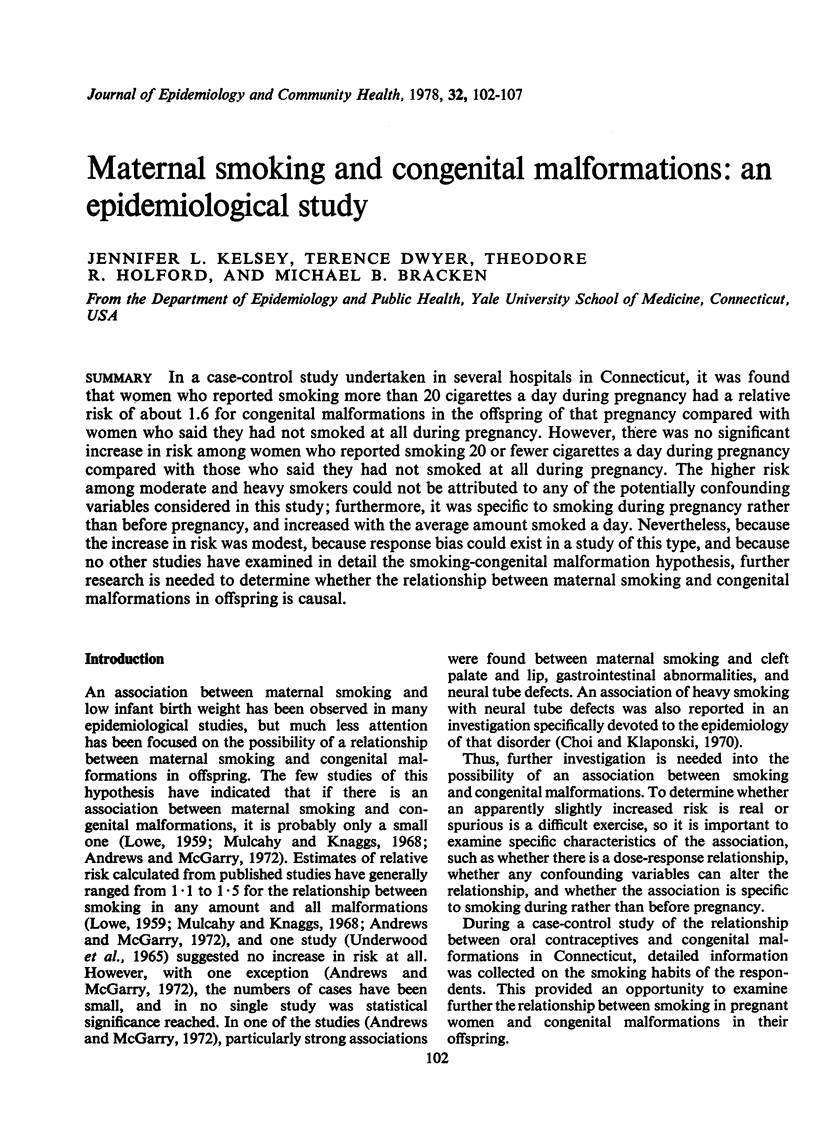
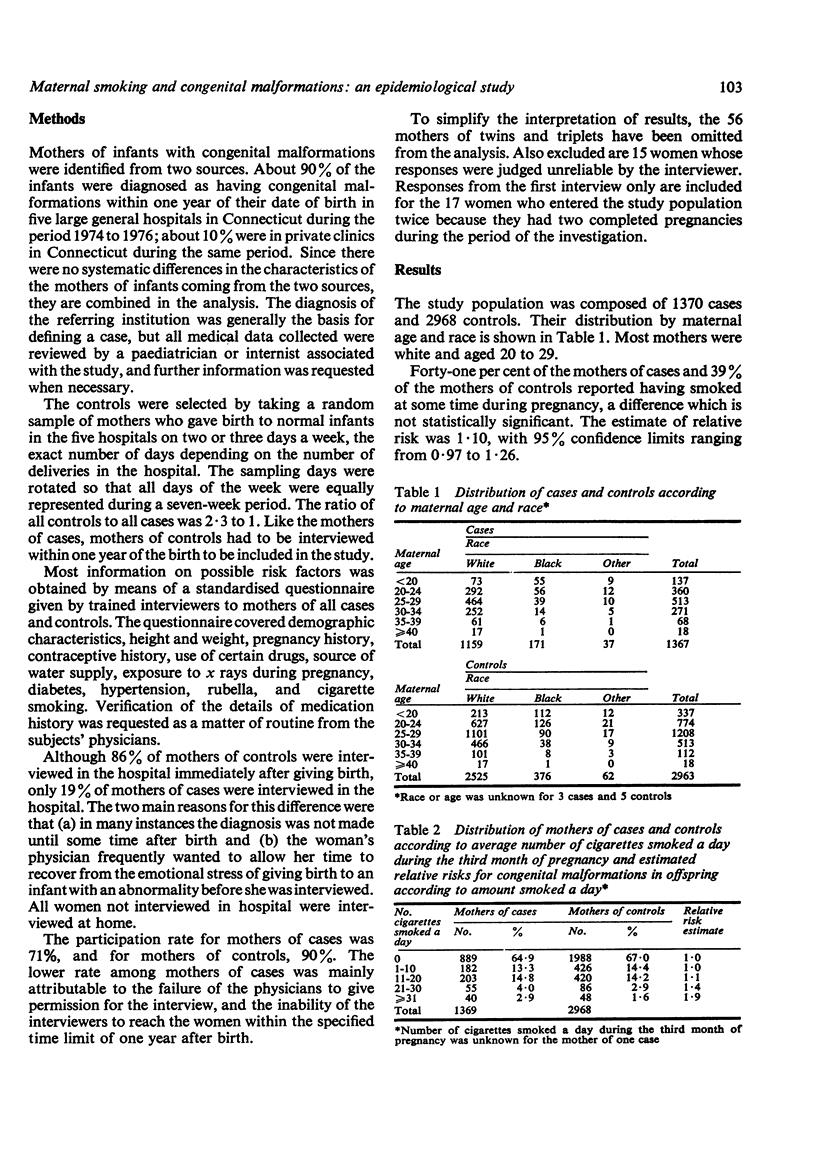
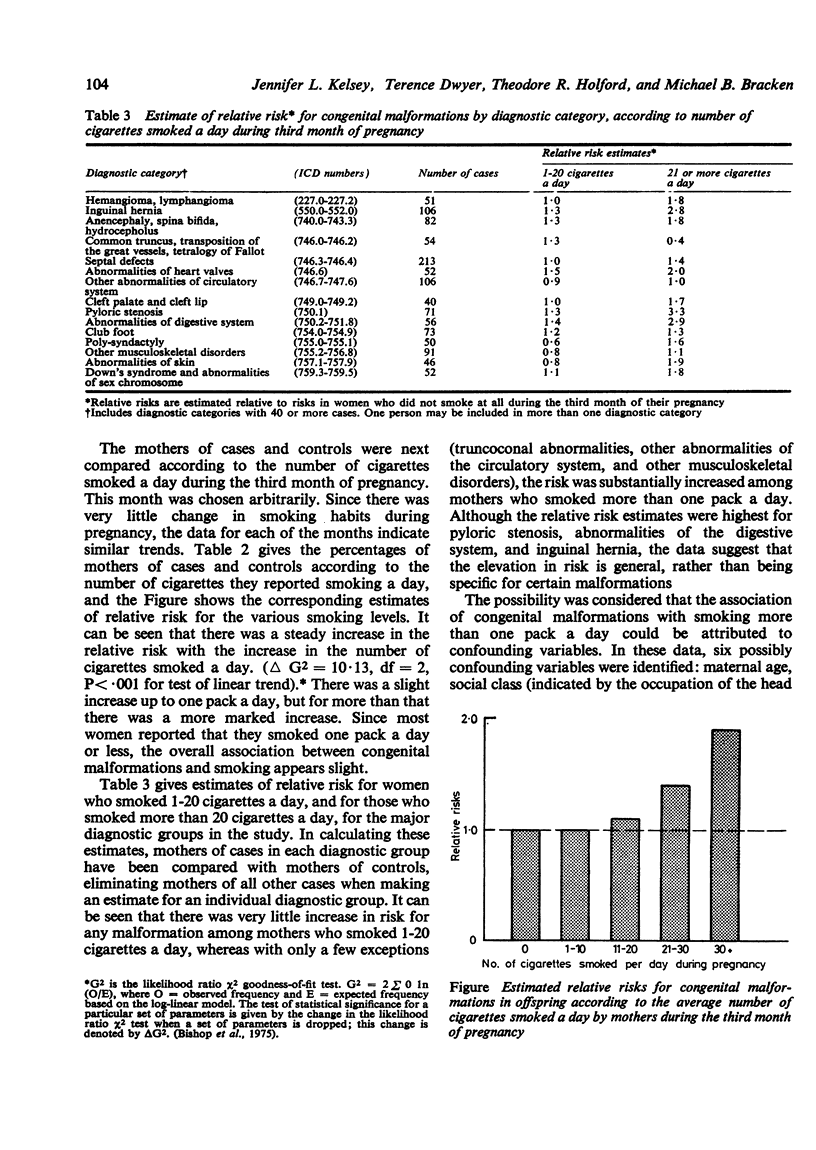
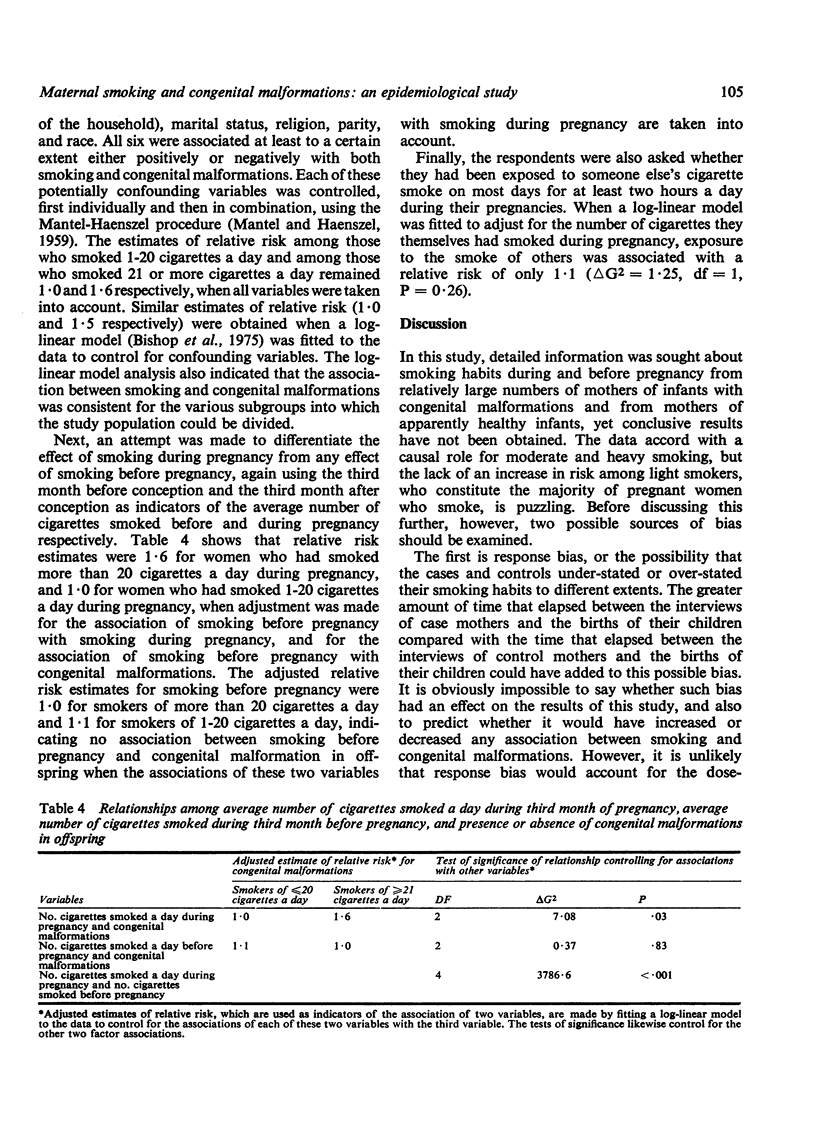
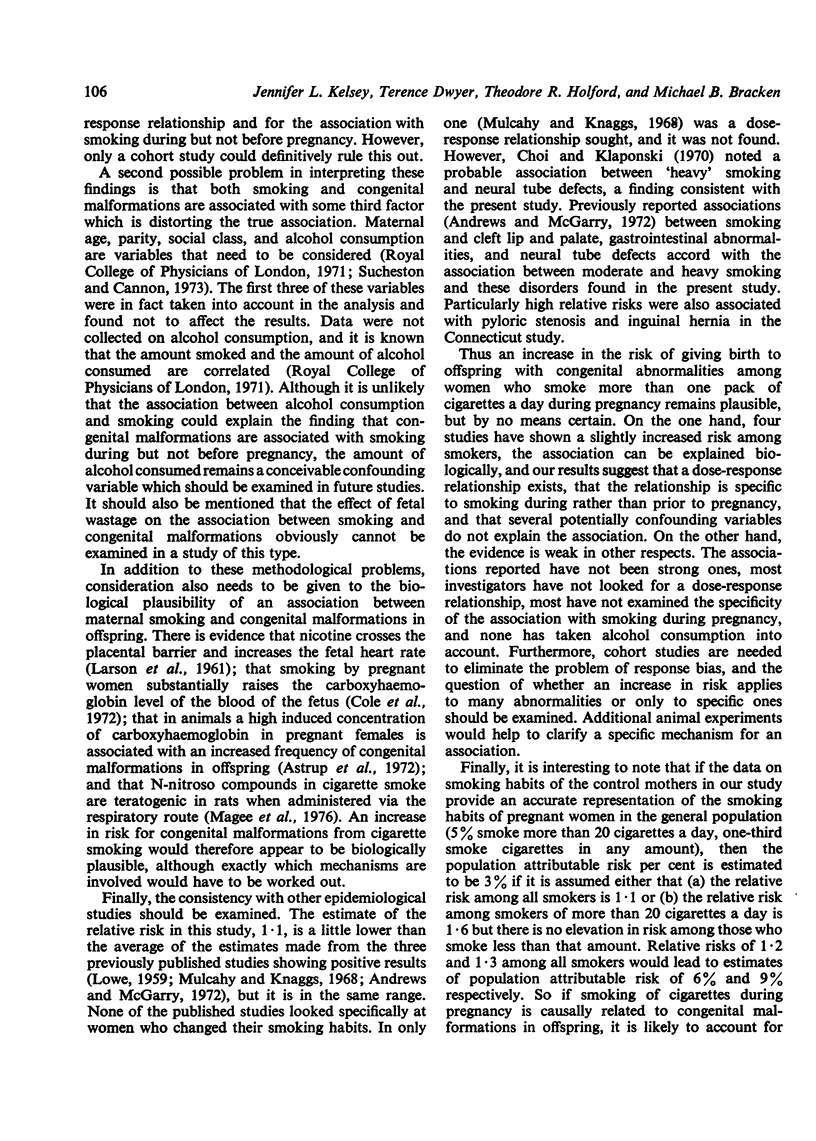
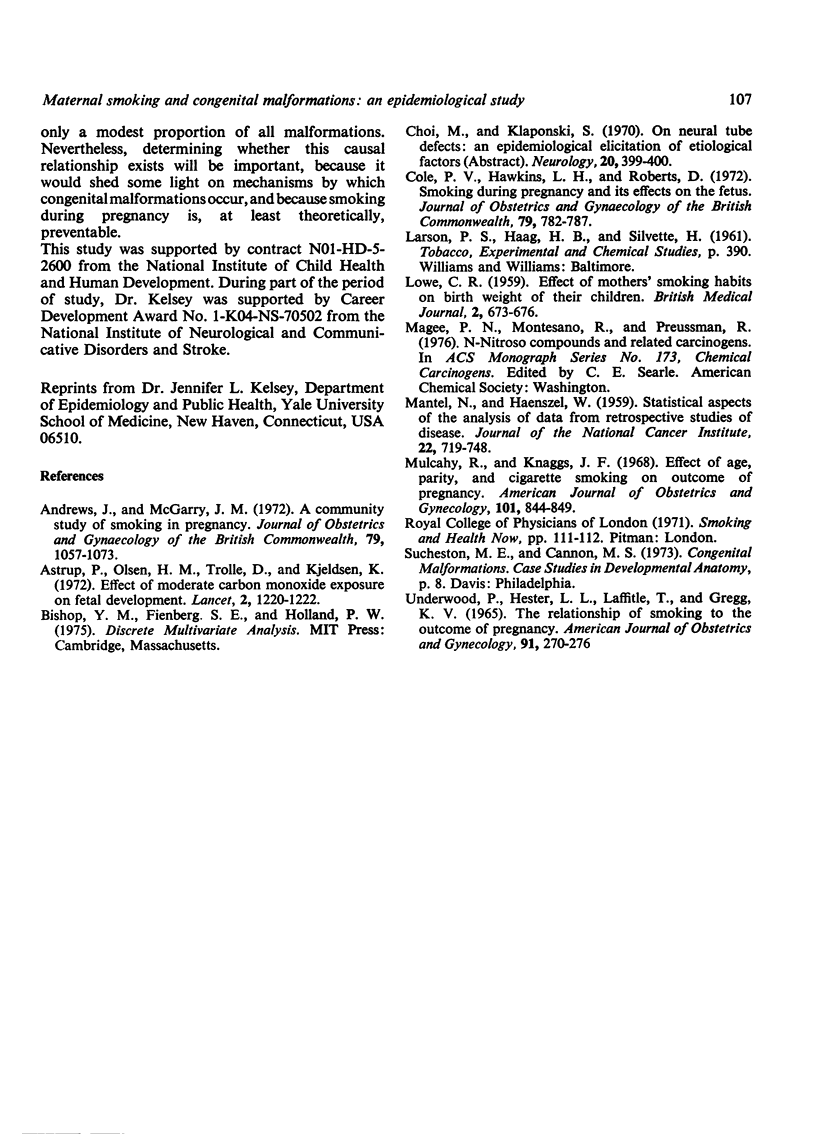
Selected References
These references are in PubMed. This may not be the complete list of references from this article.
- Andrews J., McGarry J. M. A community study of smoking in pregnancy. J Obstet Gynaecol Br Commonw. 1972 Dec;79(12):1057–1073. doi: 10.1111/j.1471-0528.1972.tb11887.x. [DOI] [PubMed] [Google Scholar]
- Astrup P., Olsen H. M., Trolle D., Kjeldsen K. Effect of moderate carbon-monoxide exposure on fetal development. Lancet. 1972 Dec 9;2(7789):1220–1222. doi: 10.1016/s0140-6736(72)92270-2. [DOI] [PubMed] [Google Scholar]
- Choi N. W., Klaponski F. A. On neural-tube defects: an epidemiological elicitation of etiological factors. Neurology. 1970 Apr;20(4):399–400. [PubMed] [Google Scholar]
- Cole P. V., Hawkins L. H., Roberts D. Smoking during pregnancy and its effects on the fetus. J Obstet Gynaecol Br Commonw. 1972 Sep;79(9):782–787. doi: 10.1111/j.1471-0528.1972.tb12920.x. [DOI] [PubMed] [Google Scholar]
- LOWE C. R. Effect of mothers' smoking habits on birth weight of their children. Br Med J. 1959 Oct 10;2(5153):673–676. doi: 10.1136/bmj.2.5153.673. [DOI] [PMC free article] [PubMed] [Google Scholar]
- MANTEL N., HAENSZEL W. Statistical aspects of the analysis of data from retrospective studies of disease. J Natl Cancer Inst. 1959 Apr;22(4):719–748. [PubMed] [Google Scholar]
- Mulcahy R. Effect of age, parity, and cigarette smoking on outcome of pregnancy. Am J Obstet Gynecol. 1968 Jul 15;101(6):844–849. doi: 10.1016/0002-9378(68)90042-2. [DOI] [PubMed] [Google Scholar]
- UNDERWOOD P., HESTER L. L., LAFFITTE T., Jr, GREGG K. V. THE RELATIONSHIP OF SMOKING TO THE OUTCOME OF PREGNANCY. Am J Obstet Gynecol. 1965 Jan 15;91:270–276. doi: 10.1016/0002-9378(65)90211-5. [DOI] [PubMed] [Google Scholar]


